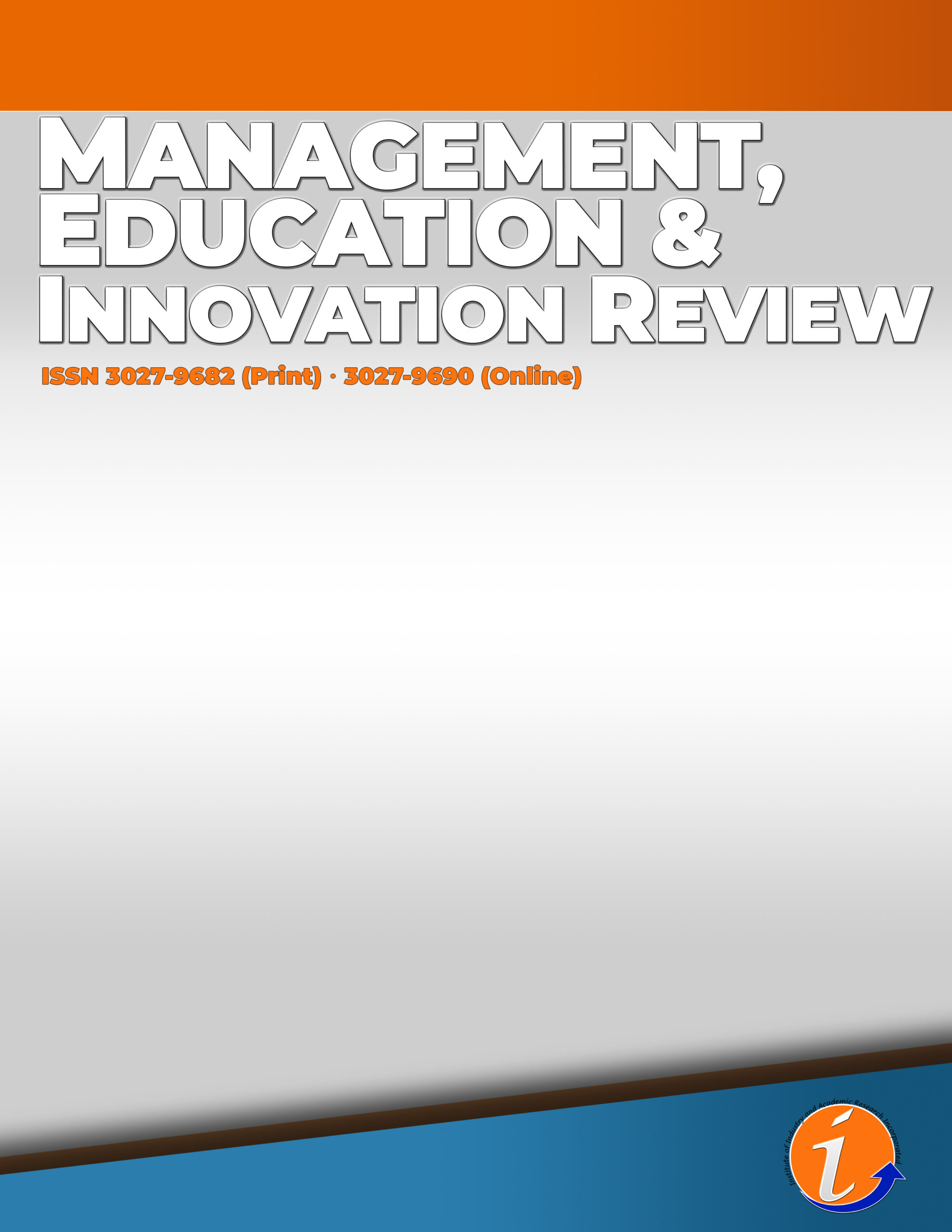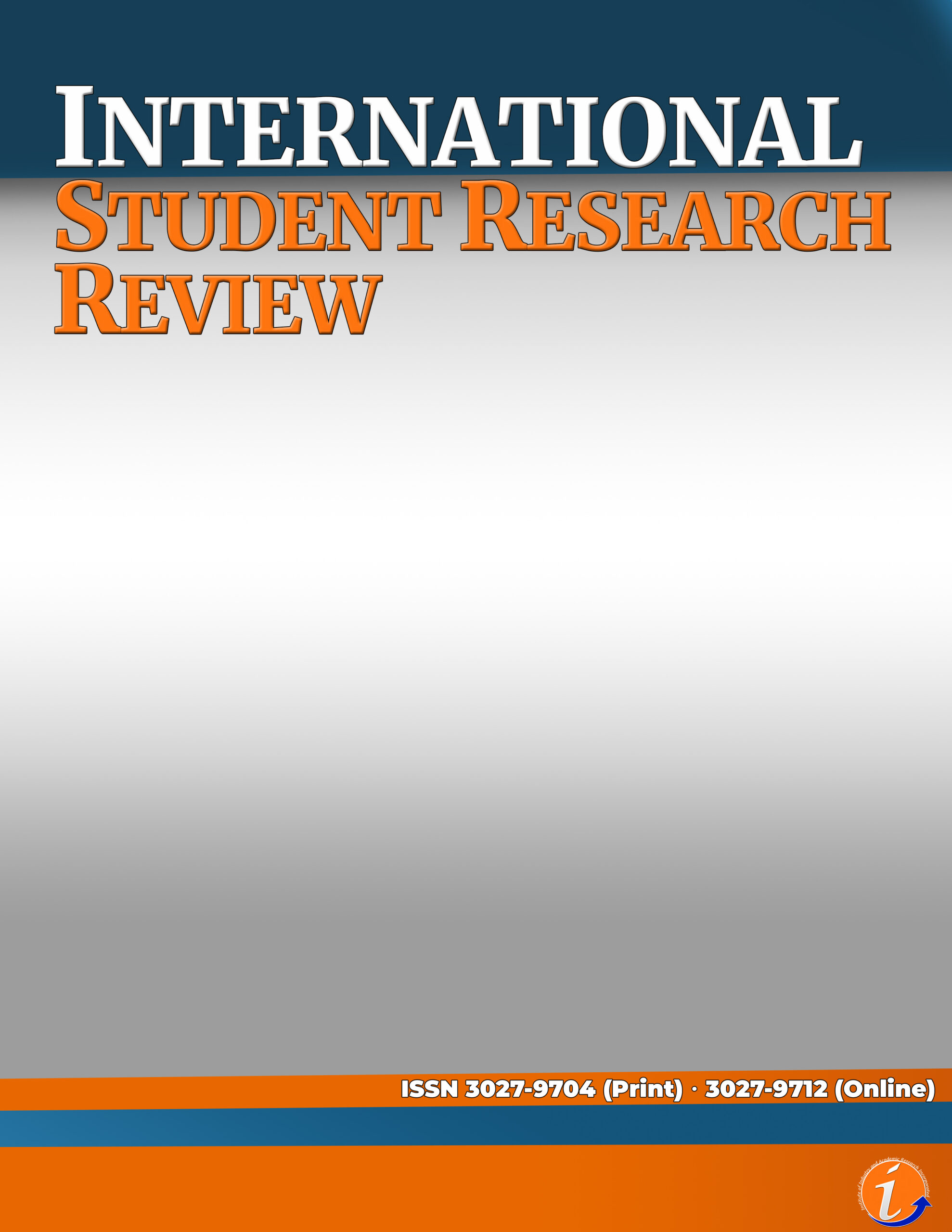The Covid-19 pandemic affected about 98 percent of the student population, causing school closures and implementation of online learning is the greatest answer during this crisis. Quality of online learning must be addressed to assure that students are highly engaged in learning. This study assessed the quality of online learning and pre-service teachers’ engagement in one state university. The study used a descriptive-correlational research design and purposive sampling techniques resulted in the study's objectives being met for the school year 2021-2022. Forty (40) BEED 4th year students participated and answered an adapted-modified questionnaire. The result shows that the quality of online learning on course content, design structure, collaboration, industry acceptance and value addition have a positive significant relationship to learning task, supportive information, just-in-time information and part-task practice that aligned to student’s learning engagement. Based on the findings, it is revealed that online learning has high quality. This also implies that high quality online learning results in high student engagement. Based on the findings of the study, the researchers advised future researchers to consider whether the quality of online learning is applicable to other universities or whether the learning engagement presented here can be modified.
Online learning quality, Engagement, Pre-Service, student engagement
This paper is presented in 2nd International Research Competition 2022
Agariya, A. K., & Singh, D. (2012). e-Learning quality: Scale development and validation in Indian context. Knowledge Management & E-Learning: An International Journal, 4(4), 500-517.
Akhtar, D. M. I. (2016). Research design. Research Design (February 1, 2016).
Amir, L. R., Tanti, I., Maharani, D. A., Wimardhani, Y. S., Julia, V., Sulijaya, B., & Puspitawati, R. (2020). Student perspective of classroom and distance learning during COVID-19 pandemic in the undergraduate dental study program Universitas Indonesia. BMC medical education, 20(1), 1-8.
Amirkhiz, S. Y. Y., Bakar, K. A., Samad, A. A., Baki, R., & Mahmoudi, L. (2013). EFL/ESL Learners’ Language Related Episodes (LREs) during Performing Collaborative Writing Tasks. Journal of Language Teaching and Research, 4(3), 473–479.
Ansarin, A. A., & Mohamadi, Z. (2013). Language engagement at the level of syntax: Assessing Metatalk and task types in SLA. International Journal of Applied Linguistics and English Literature, 2(4), 142-154.
Ansarin, A. A., & Mohamadi, Z. (2013). Language engagement in task-based interaction: Focus on intonation. The Iranian EFL Journal, 12(2), 152.
Baloran, E. T., & Hernan, J. T. (2021). Course satisfaction and student engagement in online learning amid COVID-19 pandemic: A structural equation model. Turkish Online Journal of Distance Education, 22(4), 1-12.
Banna, J., Lin, M.-F. G., Stewart, M., & Fialkowski, M. K. (2015). Interaction matters: Strategies to promote engaged learning in an online introductory nutrition course. Journal of Online Learning and Teaching, 11(2), 249–261.
Barkley, E. F., Cross, K. P., & Major, C. H., (2014). Collaborative learning techniques: A handbook for college faculty (2nd ed.). San Francisco, CA: Jossey-Bass.
Bentley, Y., Selassie, H., & Shegunshi, A. (2012). Design and evaluation of student-focused eLearning. Electronic Journal of e-Learning, 10(1), 1-12
Callahan, C., Saye, J. & Brush, T. (2013). Designing web-based educative curriculum materials for the social studies. Contemporary Issues in Technology and Teacher Education, 13(2), 126-155.
Camacho, B., & Alexandre, R. (2019). Design Education. University-industry collaboration, a case study. The Design Journal, 22(sup1), 1317-1332.
Dahalan, N., Hasan, H., Hassan, F., Zakaria, Z. & Noor, W., A., W., M. (2013). Engaging students online: Does gender matter in adoption of learning material design? World Journal on Educational Technology, 5(3), 413-419.
Dahalan, N., Hassan, H., & Atan, H. (2012). Student engagement in online learning: Learners attitude toward e-mentoring. Procedia-Social and Behavioral Sciences, 67, 464-475.
Dahan, M. A. (2019). Effects of the availability and use of instructional materials on academic performance of students in Punjab (Pavaratan). Euro Journal Publishing Lecture.
Darhower, M. (2004). Dialogue journals as mediators of L2 learning: A sociocultural account. Hispania, 324-335.
Darling-Hammond, L. (2015). Can Value Added Add Value to Teacher Evaluation? Educational Researcher, 44(2), 132–137. https://doi.org/10.3102/0013189X15575346
Davidson, N., & Major, C. H. (2014). Boundary crossings: Cooperative learning, collaborative learning, and problem-based learning. Journal on Excellence in College Teaching, 25(3&4), 7-55.
Dhawan, S. (2020). Online learning: A panacea in the time of COVID-19 crisis. Journal of educational technology systems, 49(1), 5-22.
Dianati, S., Nguyen, M., Dao, P., Iwashita, N., & Vasquez, C. (2020). Student Perceptions of Technological Tools for Flipped Instruction: The Case of Padlet, Kahoot! and Cirrus. Journal of University Teaching and Learning Practice, 17(5), 4.
Dixson, M.D. (2010). Creating effective student engagement in online courses: What do students find engaging? Journal of the Scholarship of Teaching and Learning 10(2): 1–13.
Dixson, M. D. (2015). Measuring student engagement in the online course: The Online Student Engagement scale (OSE). Online Learning, 19(4), n4.
Doo, M. Y., Bonk, C., & Heo, H. (2020). A meta-analysis of scaffolding effects in online learning in higher education. International Review of Research in Open and Distributed Learning, 21(3), 60-80.
Dörnyei, Z., & Kormos, J. (2000). The role of individual and social variables in oral task performance. Language teaching research, 4(3), 275-300.
Fletcher, A. (2019, March 29). Defining student engagement: A literature review. SoundOut. https://soundout.org/defining-studentengagement-a-literature-review/
Foster, P. (1998). A classroom perspective on the negotiation of meaning. Applied linguistics, 19(1), 1-23.
Galy, E., Downey, C., & Johnson, J. (2011). The effect of using e-learning tools in online and campus-based classrooms on student performance. Journal of Information Technology Education: Research, 10(1), 209-230.
Gedik, N., Kiraz, E, & Ozden, M.Y. (2013). Design of a blended learning environment: Considerations and implementation issues. Australasian Journal of Educational Technology, 29 (1).
Gould, K. S., Gilbert, A., Pike, A. J., & Menzies, I. J. (2018). Interactive touch-screen monitors facilitate collaborative learning of microscopy skills in an introductory-level plant biology lab. Journal of Biological Education, 53, 1-7. https://doi.org/10.1080/00219266.2017.1420680
Grant, M. & Thornton, H. (2007). Best practices in undergraduate adult-centered online learning: Mechanisms for course design and delivery. Journal of Online Learning and Teaching, 4(3), 346 – 356.
Gray, J. A., & DiLoreto, M. (2016). The effects of student engagement, student satisfaction, and perceived learning in online learning environments. International Journal of Educational Leadership Preparation, 11(1).
Halil, N. I. (2020). The effectiveness of using edmodo as an online learning platform in Covid-19. Jurnal Penelitian dan Pengkajian Ilmu Pendidikan: e-Saintika, 4(3), 284-298.
Hubackova, S. (2015). History and Perspectives of Elearning. Procedia – Social and Behavioral Sciences, 191, 1187–1190. https://doi.org/https://doi.org/10.1016/j.sbspro.2015.04.594
Jones, K., & Sharma, R. (2020). On reimagining a future for online learning in the post-COVID era.
Kevin Jones & Ravi Sharma (2020). Reimagining A Future for Online Learning In The Post-COVID Era. First posted on medium.com.
Kelly, R. (73). percent of students prefer some courses be fully online post-pandemic. Campus Technology.
Kember, D., & Ginns, P. (2012). Evaluating teaching and learning: A practical handbook for colleges, universities and the scholarship of teaching. Routledge., 66, 375–377. https://doi.org/10.1007/s10734- 012-9557-9.
Kim, M.K., Kim, S.M., Khera, O. & Getman, J. (2014). The experience of three flipped classrooms in an urban university: An exploration of design principles. Internet and Higher Education, 22, 37 – 50.
Lee, D., Morrone, A. S., & Siering, G. (2017). From swimming pool to collaborative learning studio: Pedagogy, space, and technology in a large active learning classroom. Educational Technology Research and Development, 66, 95-127. https://doi.org/10.1007/s11423-017- 9550-1
Lee, J. (2014). An exploratory study of effective online learning: Assessing satisfaction levels of graduate students of mathematics education associated with human and design factors of an online course. International Review of Research in Open & Distance Learning, 15(1).
Luchaninova, O., Koval, V., Deforzh, H., Nakonechna, L. & Golovnia, O. (2019). Formation of communicative competence of future specialists by means of group work. Espacios, 40 (41), 11.
Martin, F., & Bolliger, D. U. (2018). Engagement matters: Student perceptions on the importance of engagement strategies in the online learning environment. Online Learning, 22(1), 205-222.
Makokha, L., & and Mutisya, D., N. (2016). Status of e-Learning in Public Universities in Kenya. Kenyatta University, South Eastern Kenya University.
McCollum, B. M. (in press). Online collaborative learning in STEM. In J. J. Mintzes & E. M. Walter (Eds.), Active learning in college science: The case for evidence-based practice. New York, NY: Springer
Misut, M., & Pribilova, K. (2015). Measuring of Quality in the Context of e-Learning. Procedia-Social and Behavioral Sciences, 177, 312-319.
Mohamadi, Z. (2017). Task engagement: a potential criterion for quality assessment of language learning tasks. Asian-Pacific Journal of Second and Foreign Language Education, 2(1), 1-25.
Nakahama, Y., Tyler, A., & Van Lier, L. (2001). Negotiation of meaning in conversational and information gap activities: A comparative discourse analysis. TESOL quarterly, 35(3), 377-405.
Nguyen, T. C., & Le, C. T. (2020). A case study by using Khan Academy, an open-source environment. Vietnam Journal of Education, 4(4), 22-27.
Noroozi, O., Busstra, M. C., Mulder, M., Biemans, H. J., Tobi, H., Geelen, A. & Chizari, M. (2012). Online discussion compensates for suboptimal timing of supportive information presentation in a digitally supported learning environment. Educational Technology Research and Development, 60(2), 193-221
Noroozi, O., Busstra, M. C., Mulder, M., Biemans, H. J., Tobi, H., Geelen, A. & Chizari, M. (2012). Online discussion compensates for suboptimal timing of supportive information presentation in a digitally supported learning environment. Educational Technology Research and Development, 60(2), 193-221.
Novak, G. M., Patterson, E. T., Gavrin, A. D., & Christian, W. (1999). Just in time teaching.
Oboko, K. H. R., & Omwenga, E. (2017). A model for evaluating elearning systems quality in higher education in developing countries. International Journal of Education and Development using ICT, 13(2), 185-204.
Oliver, R., & Mackey, A. (2003). Interactional context and feedback in child ESL classrooms. The Modern Language Journal, 87(4), 519–533.
Paesani, K., & Allen, H. W. (2012). Beyond the language‐content divide: Research on advanced foreign language instruction at the postsecondary level. Foreign Language Annals, 45(s1), s54-s75.
Pham, L., Limbu, Y. B., Bui, T. K., Nguyen, H. T., & Pham, H. T. (2019). Does e-learning service quality influence e-learning student satisfaction and loyalty? Evidence from Vietnam. International Journal of Educational Technology in Higher Education, 16(1), 1-26.
Picciano, A. G. (2021). Theories and frameworks for online education: Seeking an integrated model. In A Guide to Administering Distance Learning (pp. 79-103). Brill.
Pokhrel, S., & Chhetri, R. (2021). A Literature Review on Impact of COVID-19 Pandemic on Teaching and Learning. Higher Education for the Future, 8(1), 133–141. https://doi.org/10.1177/2347631120983481
Polio, C., & Gass, S. M. (1998). The role of interaction in native speaker comprehension of nonnative speaker speech. The Modern Language Journal, 82(3), 308–319
Puzziferro, M., & Shelton, K. (2014), A model for developing high-quality online courses: Integrating a systems approach with learning theory
Quin, D. 2017. Longitudinal and contextual associations between teacher–student relationships and student engagement. Review of Educational Research, 87(2): 345–387. DOI: https://doi. org/10.3102/0034654316669434
Radha, R., Mahalakshmi, K., Kumar, V. S., & Saravanakumar, A. R. (2020). E-Learning during lockdown of Covid-19 pandemic: A global perspective. International journal of control and automation, 13(4), 1088-1099.
Rajabalee, B. Y., Santally, M. I., & Rennie, F. (2020). A study of the relationship between students’ engagement and their academic performances in an eLearning environment. E-Learning and Digital Media, 17(1), 1-20.
Rennie F and Morrison T (2013) E-Learning and Social Networking Handbook: Resources for Higher Education. New York: Routledge Press.
Seta, H. B., Hidayanto, A. N., & Abidin, Z. (2020). Variables Affecting E-Learning Services Quality In Indonesian Higher Education: Students’perspectives. Journal of Information Technology Education, 19.
Siedlecki, S. L. (2020). Understanding descriptive research designs and methods. Clinical Nurse Specialist, 34(1), 8-12.
Silvola, A., Näykki, P., Kaveri, A., & Muukkonen, H. (2021). Expectations for supporting student engagement with learning analytics: An academic path perspective. Computers & Education, 168, 104192.
Sinclair, P., Levett-Jones, T., Morris, A., Carter, B., Bennett, P., & Kable, A. (2017). High engagement, high quality: A guiding framework for developing empirically informed asynchronous e-learning programs for health professional educators. Nursing & Health Sciences. 19(1), 126–137. https://doi.org/10.1111/nhs. 12322.
Singh, V., & Thurman, A. (2019). How many ways can we define online learning? A systematic literature review of definitions of online learning (1988-2018). American Journal of Distance Education, 33(4), 289-306.
Sülzenbrück, S., & Heuer, H. (2013). Effective part-task training as evidence of distinct adaptive processes with different time scales. Plos one, 8(3), e60196.
Sun, A., & Chen, X. (2016). Online education and its effective practice: A research review. Journal of Information Technology Education, 15.
Sun, J. C. Y., Martinez, B., & Seli, H. (2014). Just-in-time or plenty-of-time teaching? Different electronic feedback devices and their effect on student engagement. Journal of Educational Technology & Society, 17(2), 234-244.
Swan, K., Day, S., Bogle, L., and Matthews, D. (2014). A collaborative, design-based approach to improving an online program. The Internet and Higher Education, 21, 74-81. http://dx.doi.org/10.1016/j.iheduc.2013.10.006
Teräs, H., & Herrington, J. (2014). Neither the frying pan nor the fire: In search of a balanced authentic e-learning design through an educational design research process. The International Review of Research In Open And Distance Learning, 15(2).
Tumuti, D. W., Wanderi, P. M., & Lang’at-Thoruwa, C. (2013). Benefits of university-industry partnerships: The case of Kenyatta University and Equity Bank. International Journal of Business and Social Science, 4(7).
Turocy, P. S. (2016). The impact of instructor expertise and competency on student learning and strategies for improvement. Athletic Training Education Journal, 11(3), 158-160.
UNESCO (2020). COVID-19 Educational Disruption and Response. https://en.unesco.org/covid19 /educationresponse. Accessed 15 April 2020.
van Merriënboer, J. J. G. (2019). The four-component instructional design model: An overview of its main design principles. 4cid. org.
Van Merriënboer, J. J., Clark, R. E., & De Croock, M. (2002). Blueprints for complex learning: The 4C/ID-model. Educational technology research and development, 50(2), 39-61.
Van Merriënboer, J.J.G., Jelsma, O., & Paas, F.G.W.C. (1992). Training for reflective expertise: A four-component instructional design model for training complex cognitive skills. Educational Technology Research and Development, 40(2), 23–43.
Vandenhouten, C., Gallagher-Lepak, S., Reilly, J., & Ralston-Berg, P. (2014). Collaboration in E-Learning: A Study Using the Flexible E-Learning Framework. Online Learning, 18(3).
Verbert, K., Govaerts, S., Duval, E., Santos, J. L., Van Assche, F., Parra, G., & Klerkx, J. (2014). Learning dashboards: an overview and future research opportunities. Personal and Ubiquitous Computing, 18(6), 1499-1514.
Vlachopoulos, D. (2016). Assuring quality in e-learning course design: The roadmap. International Review of Research in Open and Distributed Learning: IRRODL, 17(6), 183-205.
Vuopala, E., Hyvönen, P., & Järvelä, S. (2015). Interaction forms in successful collaborative learning in virtual learning environments. Active Learning in Higher Education, 17, 25-38. https://doi.org/10.1177/1469787415616730
Wanner, T. (2015). Enhancing Student Engagement and Active Learning through Just-in-Time Teaching and the Use of Powerpoint. International Journal of Teaching and Learning in Higher Education, 27(1), 154-163.
Weis, L. (2021). Theoretical approach to E-learning quality. Economics. Ecology. Socium, 5(1), 33-45.
Wickens, C. D., Hutchins, S., Carolan, T., & Cumming, J. (2013). Effectiveness of part-task training and increasing-difficulty training strategies: a meta-analysis approach. Human Factors, 55(2), 461-470.
Yildiz, Z., & Karabiyik, B. (2012). The implementation of a lesson plan which is prepared according to the meaningful learning theory and evaluation of the results. Procedia-Social and Behavioral Sciences, 46, 4021-4025.
Zalat MM, Hamed MS, Bolbol SA (2021) The experiences, challenges, and acceptance of e-learning as a tool for teaching during the COVID-19 pandemic among university medical staff. PLoS ONE 16(3): e0248758.
Zhang, K., Wu, S., Xu, Y., Cao, W., Goetz, T., & Parks-Stamm, E. J. (2021). Adaptability promotes student engagement under COVID-19: the multiple mediating effects of academic emotion. Frontiers in psychology, 3785
Cite this article:
Gutierrez, B.B., Silang, A.I. & Ching, Delon A. (2022). Assessing The Quality of Online Learning and Pre-Service Teachers’ Engagement in One State University. The Research Probe, Volume 2 Issue 2, pp. 77 - 87.
License:
![]()
This work is licensed under a Creative Commons Attribution (CC BY 4.0) International License.













